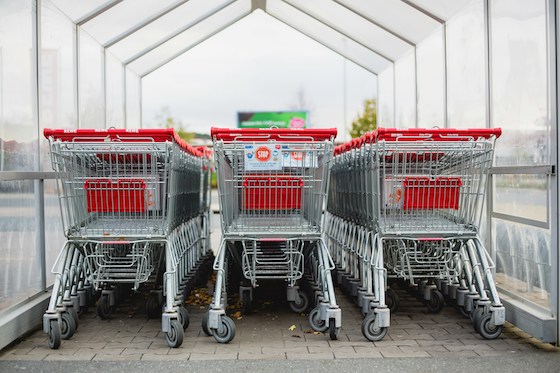When shoppers search for nearby stores on-the-go, they count on Google to return the most relevant, accessible, and trustworthy results possible. Appearing in the local pack is marketing gold for local businesses that want to increase foot traffic – but scoring a spot in the top three search results doesn’t happen by accident.
Today I want to discuss local presence management strategies for helping businesses connect with more local shoppers online. Local marketers can apply these tactics to help clients improve online visibility, increase local search ranking, and make it easier for anyone to quickly find the closest store location.
1. Get Maximum Value from Google My Business
Boosting online visibility isn’t about throwing money at the problem. In fact, there are some changes that local businesses can make today that won’t cost a thing. When tasked with improving a business’ online presence, one of the first things to determine is whether the business is already taking full advantage of Google My Business (GMB).
Claiming and optimizing the Google My Business listing is one of the easiest, most budget-friendly ways to take control of a business’ local presence online. Yes, it’s free! Ensure the listing is complete by uploading high-quality images, updating the holiday hours, selecting one business category, and double-checking that the name, address and phone (NAP) data is 100% accurate.
A Brandmuscle study revealed that 56% of local retailers still haven’t claimed their GMB listing. The better Google understands the business, the more likely it will be to include it in relevant search results. Businesses that do not leverage GMB are missing out in a big way.
2. Earn Google’s Trust with Authoritative Citations
Inconsistent NAP data is one of the biggest bad data culprits online, and it can damage both business visibility and reputation. It’s absolutely critical to ensure that the business name, address, and phone number is identical in every citation, especially since Placeable reveals that 73% of consumers lose trust in a business with inconsistent location information.
I recommend submitting listings to established local directories as well as industry-specific sources. Both local and niche citations play an important role in strengthening a business’ online presence.
3. Invest in Local Link Building
Building links is a classic component of SEO – but only if the business is selective about where those backlinks are coming from. If Google notices an influx of traffic coming from untrustworthy sites, the search giant will punish the business with lower rankings. However, high-quality links from reputable sources can drive organic web traffic and do wonders for a business’ online visibility.
There are plenty of ways to score backlinks, but some are less scrupulous than others. To keep a business’ reputation safe and build quality backlinks, stick to these tried and true strategies:
- Participate in community forums
- Sponsor a local event or sports team
- Submit listings to quality local directories
4. Encourage Happy Customers to Write Reviews
Reviews are very powerful. Not only do positive customer reviews provide social proof that drives sales, they can also strengthen a business’ local presence online. Why? Because search engines are able to differentiate positive reviews from negative ones. Basically, getting a good customer review gives a personal recommendation to Google, and this can help the business rank higher in local search results.
Still not convinced that encouraging customers to write reviews is worth the effort? According to BrightLocal, 91% of consumers look at online reviews before making a purchasing decision. And consider your own behavior – you seek out the reviews, don’t you? I certainly do.
5. Connect with the Community on Social Media
You understand that social media can be a powerful tool for businesses. After all, social platforms are a great place to make announcements, share company news, and generate more brand awareness. An active social presence also presents an opportunity for business to reach out and form relationships with members of the local community.
Businesses can get more local interest on social by tapping into local events and stories to inspire post ideas. Participate in community conversations, and feel free to use regional dialect that only a local would understand. This resonates with consumers who get the reference, and creates the same kind of bond shared by friends with an inside joke.
6. Go Mobile or Go Home
Consumers are searching for local businesses using phrases like “near me” and “closest to me” more than ever. The easier that on-the-go customers can find the business online, the more foot traffic the store will receive.
Did you know that half of all local searches on smartphones lead to an in-store visit or phone call within one day? In this study, Google shared this stat along with many others. At this point, mobile and local search are inextricably linked. A local business without a mobile-friendly web presence is simply leaving money on the table.
7. Put Multi-Location Businesses on the Map with Local Landing Pages
All businesses should be proactive in managing their local presence, but especially multi-location businesses juggling several NAP data variations. Since stores with more than one location face additional challenges when it comes to local data, there are solutions designed specifically to manage multi-location business store details.
Adding a store locator map to a multi-location business’ website allows customers to easily find directions to nearby stores while staying on the brand’s website. Customers can click on a map pin for more details, including hours of operation and contact information. A quality store locator will also generate location landing pages that help the business rank higher in local search results.
8. Don’t Create Empty Content – Remember to E-A-T
We’ve all heard that content is king, but have you considered how authoritative local content can feed into a business’ content strategy?
Google judges content quality based on the source’s expertise, authoritativeness, and trustworthiness (E-A-T). For local businesses, E-A-T includes local-focused content and industry updates with a local twist.
Businesses want to create share-worthy content that can gain traction in the community. Since customers appreciate meaningful local content more than generic posts about the industry, a local perspective is always welcome.
Local Presence Management is More Than Good SEO
Local customers expect search engines to provide instant access to everything they could possibly want to know – including their closeness to the nearest coffee shop or shoe store.
To meet consumer demand for relevant results, search algorithms evolve all the time, and we’re already seeing machine learning taking on a larger role in search results. As Google grows ever more intelligent, we can expect search results to become even more targeted and local.



